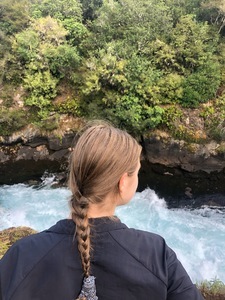17672577
Functions Of A River
Beschreibung
Keine Merkmale angegeben
Mindmap von Lauren Spence , aktualisiert more than 1 year ago
Mehr
Weniger

|
Erstellt von Lauren Spence
vor fast 6 Jahre
|
|
Zusammenfassung der Ressource
Functions Of A River
- Hydrological
Functions:
- Rivers are drainage
systems that
transport water
(under the influence
of gravity) from
higher points to
lower points of the
topography
- Systems are generally fed by
precipitation, but don't always
drain to oceans - some rivers drain
into lakes. Eg. Lake Eyre
- Systems are generally fed by
precipitation, but don't always
drain to oceans - some rivers drain
into lakes. Eg. Lake Eyre
- The water flows in
unregulated, or
those without dams
or weirs, responds
directly to
precipitation in the
catchment;
although, there may
be considerable
rainfall without
runoff reaching
rivers
- Rivers are drainage
systems that
transport water
(under the influence
of gravity) from
higher points to
lower points of the
topography
- Geomorphic
Functions
- River systems
transport
soluble and
insoluble
materials.
- Rivers are a part of the
mechanism that moves
and redistributed many of
the products of weathering
that breaks down the
catchments landforms,
and also erodes the river
bed and bank
- Eg. Boulders (in
heavy flow),
sand, silt, clay
(in light flow)
- Eg. Boulders (in
heavy flow),
sand, silt, clay
(in light flow)
- The geometry of the river
can become unbalanced
and the course takes a
different path. Landform
features remaining after
this redirection of floe are
referred to as relict
features
- River systems
transport
soluble and
insoluble
materials.
- Ecological and
Scientific functions
- Rivers are described as
linear ecosystems
because many life forms
depend on
life-supporting
materials passing
through their habitat.
- Rapid alterations can
upset the balance the
balance and lead to
irreparable river
degradation.
- Rapid alterations can
upset the balance the
balance and lead to
irreparable river
degradation.
- A balanced aquatic ecosystem
will help maintain good water
quality.
- Rivers are described as
linear ecosystems
because many life forms
depend on
life-supporting
materials passing
through their habitat.
Möchten Sie kostenlos Ihre eigenen Mindmaps mit GoConqr erstellen? Mehr erfahren.
